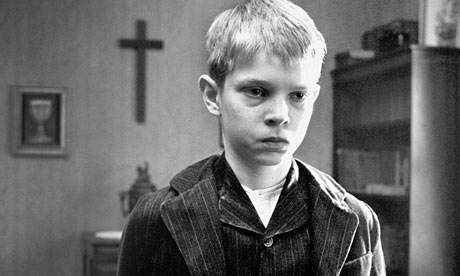Coming Attractions in Film: January 2010
By Justin Marble

A headstrong Iranian adolescent falls in love with an illegal Afghan worker in Heiran, the first fiction feature from documentary director Shalizeh Arefpour. At the MFA this month.
January 8th-17th: Boston Festival of Films from Iran at the MFA: With one of the most intriguing yet little-seen film movements in the entire world, the MFA’s presentation of several Iranian films over the course of a week and a half is a rare opportunity to catch a glimpse of some truly original cinema.
Many of the efforts here are political or social commentaries, yet the inclusion of films like Payman Haghani’s “A Man Who Ate His Cherries” shows the diversity of Iranian cinema. Undoubtedly the highlight is modern master Abbas Kiorastami’s latest film, “Shirin,” which opens the festival on the 8th and 9th, and uses a nontraditional narrative technique (filming the audience’s reaction to a film) to help tell the story.
January 15th: “The White Ribbon” Opens at Kendall Square Cinema: In a decidedly lackluster year for cinema (at least compared to 2007 and 2008), cinephiles await this year’s Palme d’Or winner, “The White Ribbon,” with great anticipation.
Austrian provocateur Michael Haneke’s exploration of a small town in Germany on the eve of World War I has received near-unanimous positive reviews from all circles, but don’t go in expecting a traditional Hollywood war story. If you’ve seen any of Haneke’s previous work, you’ll know to expect dark nihilistic violence, psychological mind games, and anti-catharsis.

A troubled turn-of-the-century German adolescent in Michael Haneke's film The White Ribbon.
January 15th: 2009 Sundance Shorts starts at the Coolidge: Since the cinematic landscape is so often dominated by traditional long-form narratives, it is easy to forget the upcoming talent and artistic possibility in the world of short films. The Coolidge does its part to remind us by selecting several short films screened at Sundance and arranging them back-to-back. There’s no better way to experience the diversity of several different genres, filmmakers, and countries all in one night.
January 18th: “The Wild Child” and linguistics lecture at the Coolidge: Continuing its trend of merging film and academia, the Coolidge presents Francois Truffaut’s “The Wild Child” along with a talk by linguistics professor Judy Shepard-Kegl. Truffaut’s film adapts the real-life story of a young boy discovered in the wilds of France, who has no previous contact with civilization or ability to communicate. Obviously, Truffaut’s examination of this human outlier aligns perfectly with the idea of language acquisition, Shepard-Kegl’s specialty.
January 23rd: Celebrating Robert Altman at the Brattle: The Brattle hosts an all-day event screening some of famed director Robert Altman’s lesser-known efforts: “Come Back to the Five and Dime, Jimmy Dean, Jimmy Dean,” “Brewster McCloud,” “The Long Goodbye,” and capping it off with his most-famous, “The Player.” As always, they’re offering reduced tickets for an all-day pass, or the option to simply pop in for a one or two.
January 29th: Peter Bogdanovich retrospective kicks off at the Harvard Film Archive: One of the more curious mainstream directors, the HFA begins showing a string of Bogdanovich films which extends into February. It kicks off with Bogdanovich’s adaptation of Henry James’ “Daisy Miller” on the 29th, and continues with offerings like the screwball comedy “What’s Up Doc?” on the 31st and concluding with “The Last Picture Show” on the 8th of February. Because he was a Hollywood director, Bogdanovich’s portfolio includes many genres, and while there are a few misfires, there should be something for everybody here.
